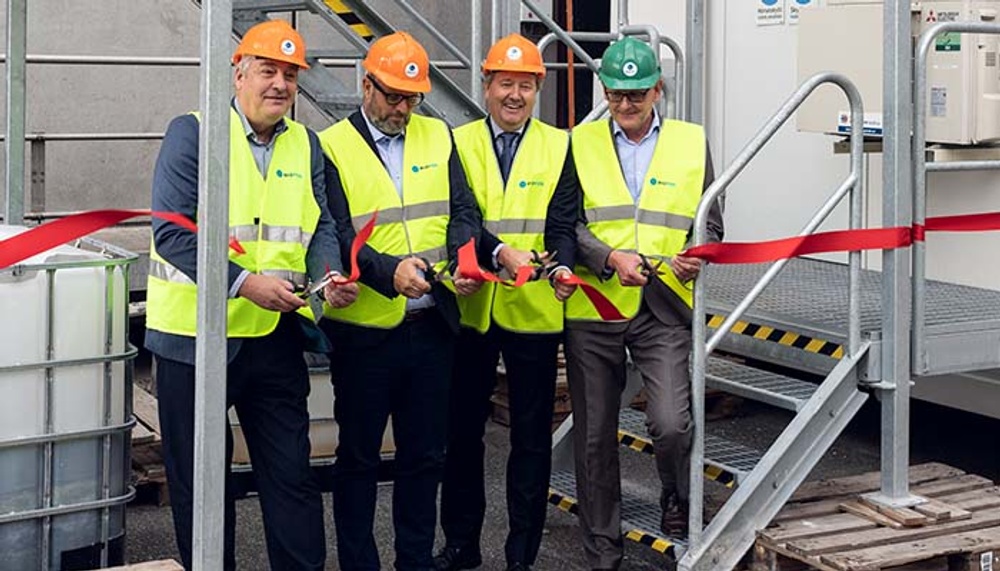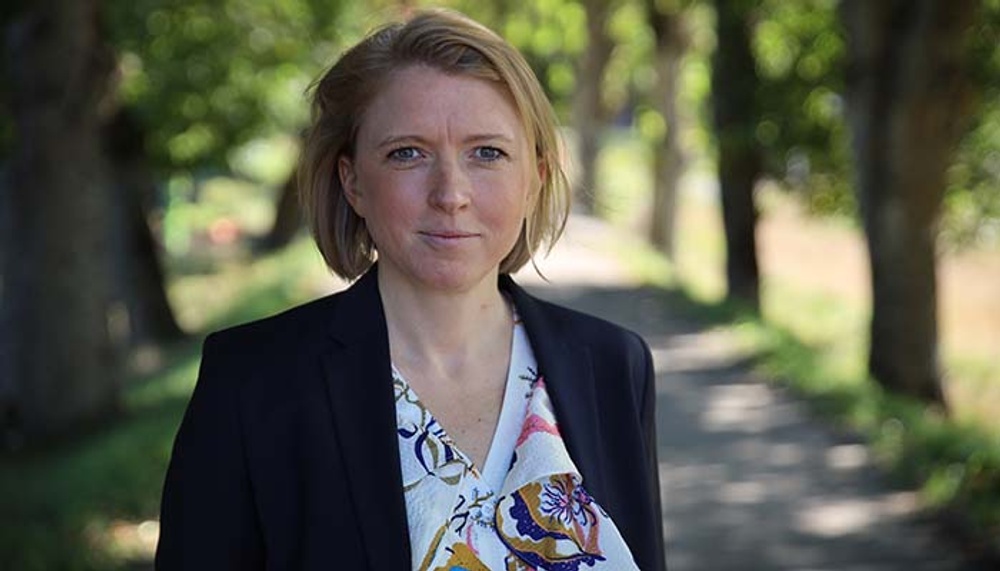Pilot plant for nitrogen recovery from wastewater inaugrated
 (From left) Lars Lindén, Ragn-Sells, Thomas Lundgren, Lantmännen, Jan Svärd, EasyMining, John Buur Christiansen, BIOFOS. Photo: Anders Hviid-Haglund
(From left) Lars Lindén, Ragn-Sells, Thomas Lundgren, Lantmännen, Jan Svärd, EasyMining, John Buur Christiansen, BIOFOS. Photo: Anders Hviid-HaglundOn the 7th of September, inauguration of the pilot plant for EasyMining’s nitrogen removal and recovery process at Denmark’s largest wastewater treatment plant, BIOFOS’ Lynetten, was celebrated. The pilot plant is built within the LIFE RE-Fertilize project, a partnership between BIOFOS, Lantmännen, Ragn-Sells and EasyMining and co-financed by the EU’s LIFE Programme.
Today, when nitrogen is extracted for fertiliser, the process requires large amounts of energy, which often comes from natural gas. The new plant can help reduce this, as the extraction of nitrogen from the wastewater is a chemical process that does not use natural gas. At the same time, the current technologies for removing nitrogen also have a negative climate impact, as nitrous oxide are emitted during the cleaning.
According to Anna Lundbom, head of marketing at EasyMining and project manager for the LIFE RE-Fertilize project, the currently used biological-based processes just release the nitrogen into the atmosphere after removing it, while the process applied by the nitrogen pilot plant captures it for use in for example fertilisers.
Anna Lundbom, Marketing and Product Sales Manager
- We want to keep the nitrogen and use it over and over again. What we do is to capture the ammonium nitrogen and then convert it to a form that can be used in the fertiliser industry, she explains.
The method can also solve capacity challenges at treatment plants. The increased population growth puts a strain on the treatment plants and creates capacity challenges at the same time as the requirements for how much nitrogen must be in the water that is returned to the sea after treatment are tightened. An increased amount of wastewater creates larger amounts of sludge, which is an organic residual product from water purification. Sludge contains large amounts of water with a high concentration of nitrogen. When the sludge has been dewatered after a digestion process, the water, called reject water or sludge liquor, is sent back to the treatment plant.
- Removing ammonium nitrogen from the reject water helps to increase the capacity of our treatment plant. At the same time, the new process will improve our climate footprint, as the process does not generate nitrous oxide emissions, says Dines Thornberg, development manager at BIOFOS.
The pilot plant will be running during the fall 2022 at BIOFOS’ wastewater treatment plant Lynetten, on the sludge liquor. Previously, the plant has been tested on leachate at Ragn-Sells' waste plant in Högbytorp outside Stockholm. The process recovers more than 98% of the nitrogen that is in reject water from the dewatering of digested sludge.
- One of the strengths of the project is that we have actors from different parts of the value chain, which is a prerequisite for achieving the circular solutions, says Anna Lundbom.
- If we are serious about creating a sustainable society, we have to use more of the raw materials we have already extracted. Wastewater is a goldmine, and this project is a great example of an innovative new process that removes and recovers nitrogen from wastewater, says Lundbom.
About EasyMining
EasyMining is an innovation company dedicated to closing nutrient cycles. We are owned by the Swedish environmental company Ragn-Sells. Our objective is to create new circular material flows in an efficient commercial way. We do this by inventing and implementing new technology that uses chemical solutions to recycle important materials.
